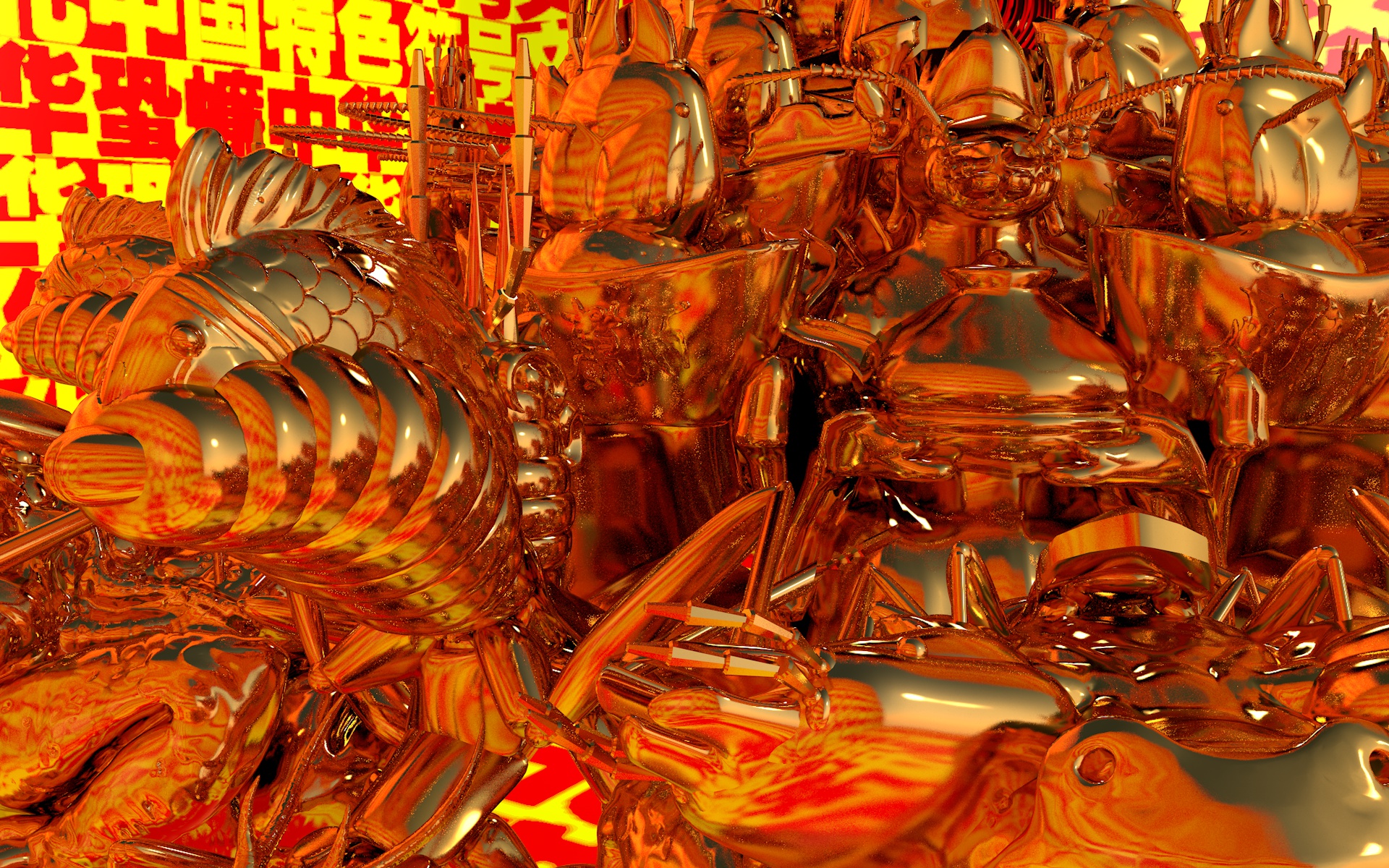Galloisiana Sinensis studies the invention (recontextualization) of cultural symbols in China. In The Invention of Tradition, Eric Hobsbawm pointed out that many cultural symbols which appear or claim to be old are often quite recent in origin and sometimes invented. The phenomenon is particularly clear since modern development of China in the past century. In the twentieth century, with the purpose of creating a national identity and promoting national unity, Chinese intellectuals redefined cultural symbols discovered from ancient history with nationalist meanings. However such process of recontextualization is usually hidden for the purpose of propagation. Cultural symbols as synecdoche for the nation is a piece of message easy to comprehend, which enables it to be powerful propaganda and advertisements.
Galloisiana Sinensis is a kind of endangered insect species discovered in Changbai Mountain located in Northeastern China. Based on this insect, the project fabricates new Chinese cultural symbols by “cross breeding” it with symbols that have already been recognized as “Chinese”. By stripping off the beauty of symbols, project Galloisiana Sinensis intends to present the process of creating a recontextualized cultural symbol.
Galloisiana Sinensis is a kind of endangered insect species discovered in Changbai Mountain located in Northeastern China. Based on this insect, the project fabricates new Chinese cultural symbols by “cross breeding” it with symbols that have already been recognized as “Chinese”. By stripping off the beauty of symbols, project Galloisiana Sinensis intends to present the process of creating a recontextualized cultural symbol.
作品通过对“中华蛩蠊”这一新发现的珍稀生物的包装与宣传,探讨文化符号、民族意识、国家观念的创造与深化。艾瑞克·霍布斯鲍姆(Eric Hobsbawm)在《传统的发明》(The Invention of Tradition) 一书中指出,许多常被认为悠久的“传统”事实上只有很短的历史,有些甚至是被发明的。“传统”的发明是在近代国家观念与民族主义发展中所出现的特有文化现象,常作为推行国家团结、合理化文化活动的一种手段,因其不易被人察觉,有效地适用于政治宣传与商业广告。“中华蛩蠊”是中国东北部的长白山地区发现的稀有昆虫,自1985年首次发现后便被列为中国一级保护动物。作品试图通过操纵这个尚未被挖掘的文化空壳,将“中华蛩蠊”的模型与其他”中国传统”文化符号杂交,强化与之相关的政治与商业潜能,作为艺术家“发明传统”的一次实践。







